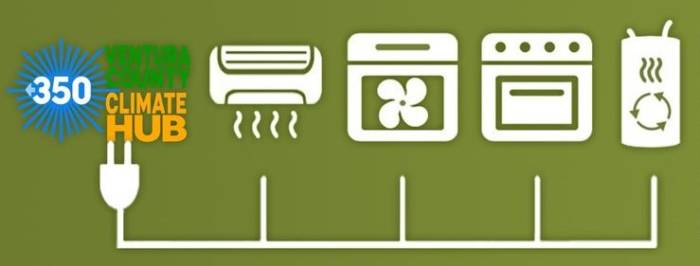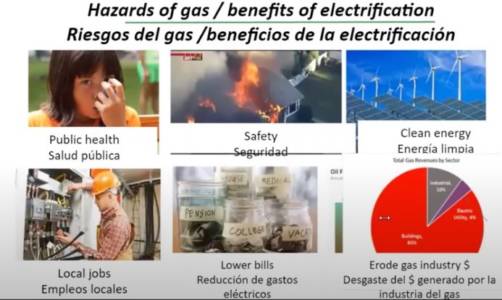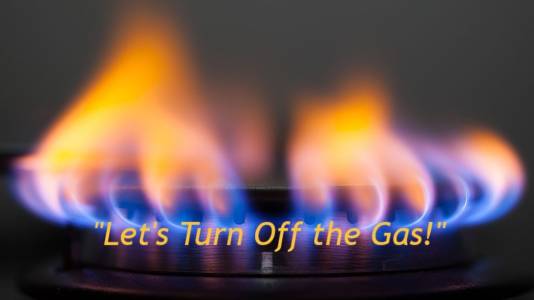 The California Energy Commission CEC) sets stronger Energy Efficiency Building Codes every three years per “Title 24”. If we don’t get strong building codes NOW for the 2022-2025 code cycle, then we must keep working on this climate action city by city. The same reasons listed here apply equally to our advocacy to city governments. Thanks to the CA Sierra Club for this list condensed for easy reading to help you understand this campaign and prepare your comments to the CEC and to your city:
The California Energy Commission CEC) sets stronger Energy Efficiency Building Codes every three years per “Title 24”. If we don’t get strong building codes NOW for the 2022-2025 code cycle, then we must keep working on this climate action city by city. The same reasons listed here apply equally to our advocacy to city governments. Thanks to the CA Sierra Club for this list condensed for easy reading to help you understand this campaign and prepare your comments to the CEC and to your city:
The CEC must require all-electric buildings in the 2022 code cycle
In your comments, pick 1 or 2 from among many reasons:
- All-electric appliances for both space and water heating, then brings substantial cost savings by avoiding the addition of new gas lines to buildings, reducing stranded asset risk as California electrifies all buildings. We do not want homebuilders to install natural gas appliances in new construction.
- Last September, in the middle of the historic California Wildfires, Governor Newsom stated “this is a damn climate emergency….our goals are inadequate to the reality we’re experiencing.” So, why is the state proposing an incremental approach when mandating electric appliances.
- Other agencies like the California Air Resources Board and Bay Area Air Quality Management District have submitted letters and made oral statements that the CEC should move to all-electric buildings in 2022.
- The Biden campaign has pledged to cut building sector emissions in half by 2035 and to eliminate all power sector emissions by the same year cutting emissions from buildings by about two-thirds.
- In November, the California Air Resources Board unanimously adopted a groundbreaking resolution committing to significant action to limit emissions from gas appliances in buildings. The resolution commits CARB to support the CEC and other agencies to adopt standards in the 2022 code cycle that will result in stronger gas stove ventilation standards and electrification of appliances for all new buildings.
- Gas industry has been spreading misinformation:
- An industry-led opposition campaign has been spreading false information on the costs and public support of electrification.
- False information is being publicized by the gas industry whose interests are clearly incompatible with California’s climate goals.
- The gas industry has created misleading front groups and misinformation campaigns that are hindering the advancement of ambitious electrification goals
- The FACT is that gas from our homes and buildings is polluting our air, our climate, and damaging our health.
- Based on research done by Rocky Mountain Institute for the City of Oakland, it is estimated to cost between $2,400 to $2,700 more per home to install two separate systems than it would be just to install a single heat pump. Even when taking into account the estimated $1,050 cost premium over gas appliances to install a heat pump water heater and an induction stove, purchasing all-electric appliances results in a net savings of $1,350 to $1,650.
More economic reasons:
Moving to all-electric will not increase construction costs–it will reduce them, and will also reduce utility bills.
- Building all-electric is less expensive than building with gas for every single housing type, according to data from SF Environment. In some cases, forgoing gas hookups and appliances saves thousands of dollars in construction costs.
- E3’s 2019 study, Residential Building Electrification in California, finds that across six different climate zones in California, the capital costs for all-electric single-family and low-rise multifamily buildings are cheaper than their natural gas alternatives.
- The report 2019 Energy Efficiency Ordinance Cost-Effectiveness Study, prepared for the California Energy Codes and Standards Program by Frontier Energy, evaluated the cost effectiveness of code compliance package options for both mixed-fuel and all-electric homes across all sixteen California climate zones. The report concluded that the all-electric code compliance option was cost effective in every climate zone when using time dependent valuation (TDV).
- Research done for the California Energy Commission (CEC) on the affordability of all-electric commercial buildings found substantial capital savings in all climate zones modeled for several different building types. The analysis found that a mixed-fuel medium size office building in California costs between $36,176 and $87,253 more than an all-electric version, with the cost-differential varying by climate zone. In that same study, the analysis found that a mixed-fuel medium size retail store cost between $21,762 and $32,504 more than an all-electric version and a mixed-fuel small hotel costs between $1,294,276 to $1,300,552 more than an all-electric version. In a separate study for the CEC, a mixed-fuel mid-rise residential building in California was found to cost about $14,400 more than an all-electric version.
- 2019 Nonresidential New Construction Reach Code Cost Effectiveness Study at 29 (2020)
- 2019 Nonresidential New Construction Reach Code Cost Effectiveness Study at 37 (2020)
- 2019 Nonresidential New Construction Reach Code Cost Effectiveness Study at 46 (2020)
- 2019 Mid-Rise New Construction Reach Code Cost Effectiveness Study at 8 (2020)
- Research done by Point Energy Innovation for the University of California in 2017 showed that the life cycle cost of an all-electric academic building was 0.7% lower than a mixed-fuel building, saving roughly $1.23/sq ft. That same study showed that the life cycle cost of an all-electric laboratory was about 0.8% less than a mixed fuel building, saving around $3.09/sq ft.
- Research done by Group 14 Engineering in 2020 found that a 28,000 square foot all-electric office building in Colorado costs about $18,100 less than its mixed-fuel counterpart.
- According to a 2018 study conducted by Navigant for the California Building Industry Association (CBIA), electric space heating also has a lower first cost than natural gas space heating. Specifically, that report, which looked at total installed costs, states that “electric appliances for space heating, cooking, and clothes drying have lower costs than natural gas options” in new construction.
- Data shows that on average a baseline code-compliant gas furnace/AC system unit is 14% more expensive than a baseline heat pump. Cost data for ultra-low NOx furnaces, which are required in key California markets including the South Coast and San Joaquin valley air districts show that the average cost of the furnace/AC unit is 29% higher (considering 0.80 AFUE ULN units only).
- NRDC’s analysis found that heat pumps were generally offered at a similar or lower price than their gas furnace/AC equivalents.
We are behind the rest of the nation and we can’t wait three more years! (from NRDC blog: https://www.nrdc.org/experts/pierre-delforge/time-ca-catch-clean-energy-new-buildings)
- Nearly 60 percent of new homes nationwide are being built all-electric and the majority, 40 percent, use heat pumps. California is an anomaly with just 5 percent of new single-family homes built with heat pumps, and 95 percent still using gas heating. This is at odds with the Golden State’s climate leadership. It is time to kick California’s addiction to gas in buildings. The 2022 statewide building code update is a critical opportunity for the Energy Commission to put the state back on a leadership track for pollution-free buildings.
- Waiting three more years would not only miss an opportunity to unleash a faster, cheaper way to build housing in the Golden State, it would cost Californians $1 billion in unnecessary gas infrastructure, and lock them into 3 million tons additional carbon emissions by 2030
- The 2022 code will affect permits that will be pulled starting in 2023, for buildings that will get built between 2024 and 2026. Delaying large-scale electrification until the 2025 code update would allow new buildings to be built with gas equipment and plumbing, and new gas infrastructure to be deployed for those buildings until 2029, because of the lag between permitting and end of construction, particularly on large projects. This is incompatible with the science, or with the climate reality we are now experiencing.
- According to the soon to be released 2019 California Residential Appliance Survey, California continues to lag behind the rest of the country, with only 8% of new homes installing heat pumps, because our energy code has incentivized the installation of natural gas appliances until recent energy code cycles. The CEC should correct this by requiring heat pumps in all new homes, regardless of climate zone.
Health related reasons:
Short-term exposure to nitrogen dioxide causes breathing problems, including asthma.
The above is the 2016 finding of the Environmental Protection Agency (EPA) in this conclusive finding .
-
- US EPA, Integrated Science Assessment (ISA) for Nitrogen Dioxide – Health Criteria, https://www.epa.gov/isa/integrated-science-assessment-isa-nitrogen-dioxide-health-criteria
- California Air Resources Board (CARB) website states: “Avoid activities that increase indoor pollution, such as burning candles, using gas stoves and vacuuming.” This is to try to reduce harmful particles in indoor air.
- California Air Resources Board, Protecting Yourself from Wildfires, https://ww2.arb.ca.gov/protecting-yourself-wildfire-smoke

- California Air Resources Board, Protecting Yourself from Wildfires, https://ww2.arb.ca.gov/protecting-yourself-wildfire-smoke
- Factors including smaller unit size, more people inside the home (occupant density), and inadequate stovetop ventilation contribute to elevated concentrations of NO2 in lower-income, multifamily buildings. Although national data for how many homes have proper stove ventilation is lacking, researchers have found that gas stoves without properly vented exhaust hoods are common in inner-city households.
- Gary Adamkiewicz et al., “Moving Environmental Justice Indoors: Understanding Structural Influences on Residential Exposure Patterns in Low-Income Communities,” American Journal of Public Health. 2011, https://www.ncbi.nlm.nih.gov/ pubmed/21836112#.
- Nadia N Hansel et al., “A Longitudinal Study of Indoor Nitrogen Dioxide Levels and Respiratory Symptoms in Inner-City Children with Asthma,” Environmental Health Perspectives Volume 116 Number 10, October 2008, p. 1430, https://ehp. niehs.nih.gov/doi/10.1289/ehp.11349.
- Patrick N. Breysse et al., “Indoor Air Pollution and Asthma in Children,” Proceedings of the American Thoracic Society Volume 7 Issue 2, 2010, p. 104, https://www.atsjournals.org/doi/full/10.1513/200908-083RM.
- Research shows that children with asthma are particularly affected by indoor air pollution from gas stoves. Children living in areas with high levels of outdoor air pollution and lower-income, African American and Hispanic children with asthma are likely the most disproportionately burdened by indoor air pollution from gas stoves.
- Integrated Science Assessment (ISA) For Oxides of Nitrogen – Health Criteria (Final Report, 2016). US Environmental Protection Agency, Washington, DC, EPA/600/R-15/068, 2016, p. lxxxvii, https://cfpub.epa.gov/ncea/isa/recordisplay. cfm?deid=310879.
- Nadia N Hansel et al., “A Longitudinal Study of Indoor Nitrogen Dioxide Levels and Respiratory Symptoms in Inner-City Children with Asthma,” Environmental Health Perspectives Volume 116 Number 10, October 2008, p. 1430, https://ehp. niehs.nih.gov/doi/10.1289/ehp.11349.
- A meta-analysis looking at the association between gas stoves and childhood asthma found children in homes with gas stoves have a 42% increased risk of experiencing asthma symptoms (current asthma), a 24% increased risk of ever being diagnosed with asthma by a doctor (lifetime asthma), and an overall 32% increased risk of both current and lifetime asthma.
- Weiwei Lin, Bert Brunekreef, and Ulrike Gehring, “Meta-analysis of the effects of indoor nitrogen dioxide and gas cooking on asthma and wheeze in children,” International Journal of Epidemiology, Volume 42, Issue 6, (December 2013): 1724–1737, https://doi.org/10.1093/ije/dyt150.
More reasons!
- In the last few weeks, France announced that it will require all electric space heating in single family homes starting in 2021 and apartment buildings in 2024, while the United Kingdom announced a similar policy as early as 2023.
- In Nov. 2020, at the Bay Area Air Quality Management District’s Climate Protection Board Subcommittee meeting, the committee members and staff affirmed for the first time publicly that they plan to propose regulations in 2021 to further reduce NOx emissions from gas appliances.
- Last month, Jeff Byron, a former CEC commissioner, submitted on the CEC docket that it’s “now time to codify electrification of all new residential construction.” Are current Commissioners under the influence of the natural gas industry?
CLICK HERE to send a letter to City Council Members in Ventura, Oxnard and Thousand Oaks

Let city council members know that childhood asthma is linked to cooking with gas. People who can’t afford to change stoves can get an electric induction hotplate and stop using the gas stove for a lot of cooking. Sending a letter to 19 council members is quick and easy.

